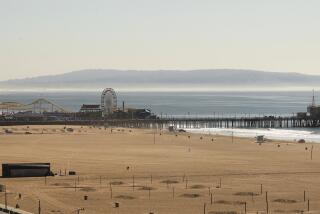Dial-a-Ride Shuttle Service Studied in Redondo Beach
- Share via
REDONDO BEACH — A dial-a-ride shuttle service run by the city with money from the county transit tax could be in place by this summer, according to a proposal approved by the City Council last week.
The service would probably cost 50 cents a ride, and would be similar to the dial-a-ride service now available to senior citizens, city officials said.
Although the proposed system is only in the planning stages, a consultant hired to study the city’s transportation needs recommended that the city launch the service with a six-vehicle fleet. If the demand for the service grows, the consultant said, more vehicles could be added, or the service could be supplemented by taxis.
The consultant’s report estimated that the service would cost $570,000 a year, with $85,000 coming from fares and the remainder from county transit taxes.
However, Sue Haller, the city’s director of intergovernmental programs, said the consultant’s proposal is “too ambitious and probably too costly” for the city. She said her staff would develop its own proposal for a dial-a-ride service in the next few months.
The consultant’s report by Ned Einstein of Transportation Alternatives concluded that a “demand-response service”--such as dial-a-ride--is best suited for Redondo Beach because residents who are dependent on public transportation are evenly distributed throughout the city.
City Manager Tim Casey said fixed-route systems, such as the trackless trolleys operated by American Trolley Lines, have been unsuccessful because there are too few residents near the lines who are dependent on public transportation. He said American Trolley, which has been losing money in Redondo Beach, removed one of its two vehicles from the city two weeks ago.
“The major reason for the city’s sparse use of its abundant fixed-route services is that the majority of potential users either reside beyond walking distance from the desired line, have no feeder service to the line, or have no place to park if they drive to it,” the Transportation Alternatives report concluded.
More to Read
Sign up for Essential California
The most important California stories and recommendations in your inbox every morning.
You may occasionally receive promotional content from the Los Angeles Times.










